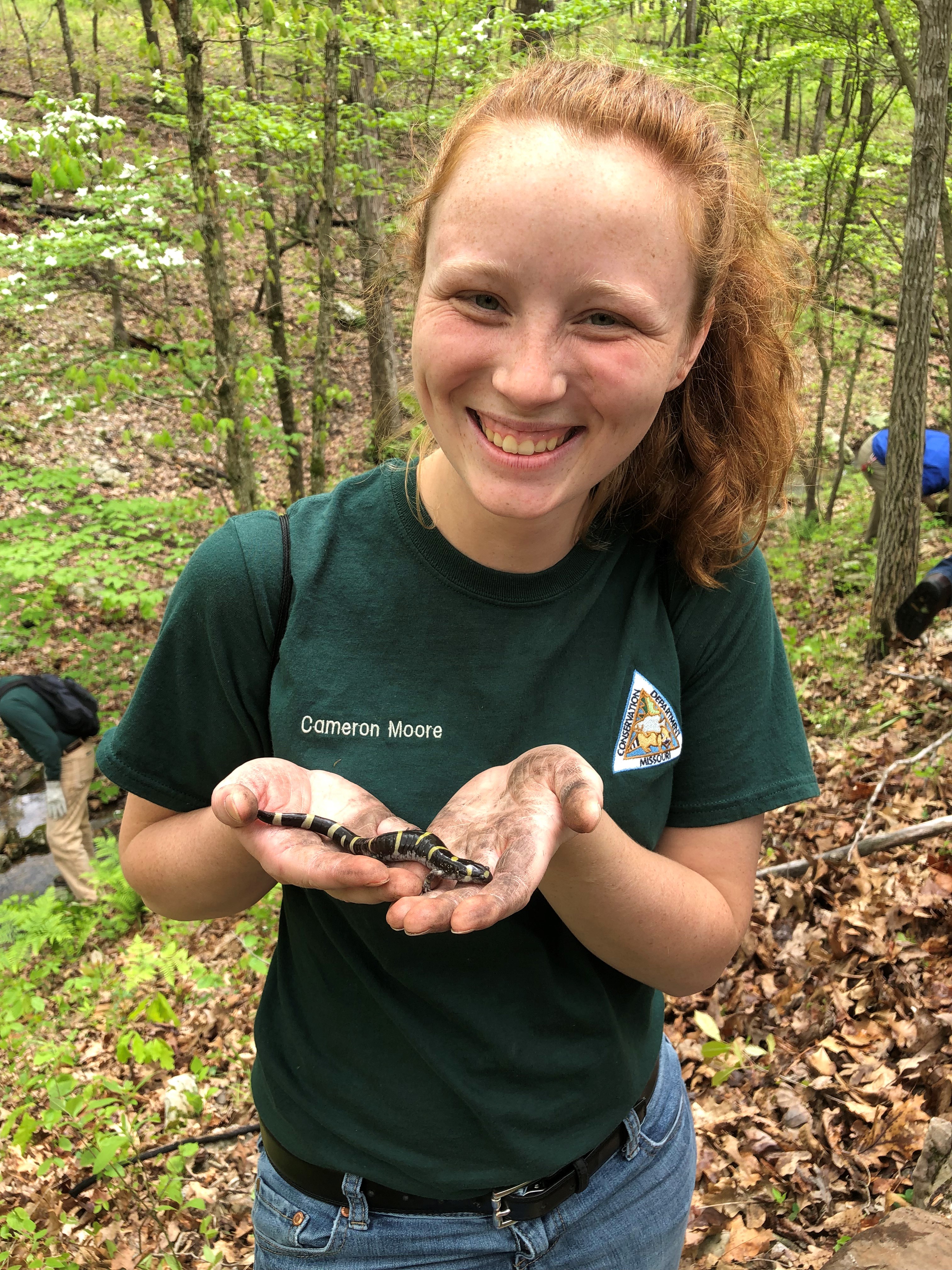Women do incredible things. This section features the stories of women who are a part of the Southeast Missouri community by way of living here, being from here or passing through. We hope these stories inspire you to connect with others and that they encourage you to be who you are in the world. We need you and your unique gifts.
Cameron Johnston is a naturalist at the Cape Girardeau Conservation Nature Center. That means it’s her job to learn about the plants and animals in Missouri and then relate what she learns to people. In her job, she gets to teach school groups, adult groups and people who come into the Nature Center with questions.
“We’re kind of a generalist, and that’s kind of the way that I like it,” she says. “I like to know about a little of everything.”
As a kid, Cameron’s family often traveled to state parks, and she says she always loved finding the interpreters at the parks and learning from them. She always thought it would be a cool job, to get to go out into nature and learn about plants and animals. She loves sharing her interest in how ecosystems work with people who are not submerged in it daily.
Cameron is especially interested in reptiles and amphibians. Amphibians, she says, have a “cool life cycle,” and she enjoys learning about the variations among them. She says she likes reptiles because they are a “misunderstood group.”
“Everyone is scared of snakes, and there’s no reason to be,” she says. “That’s just kind of what I’m drawn to.”
The best part of her job, though, is working with children.
“I really like being able to be more hands-on with what we’re looking at and then translating that to kids,” she says. “It’s really exciting when you have a kids’ program and they get excited about what you’re talking about and they want to learn more, they want to go out and explore and use that knowledge. So that’s kind of the best part about it for me.”

Last summer while we at flourish were hiking on gravel roads all summer long, we noticed the beauty of spider webs. To be prepared to more deeply appreciate the intricacy this summer, we spoke with Cameron in our quest to learn more about how spiders defy the odds in their beautiful act of creation. We loved what she had to say, and want to share it here.
Remember “Charlotte’s Web?”
Spiders are arachnids, and arachnids have two body segments. In their abdomen, which is the bigger hind end area of the two, they have a spinneret where they produce silk. Although all spiders can produce silk, generally only female spiders build webs. As it turns out, there are several categories of spiders that build different types of webs; orb spiders are the ones who build the photogenic circular ones. In contrast, black widow spiders, for example, weave tangle webs, which look like a “crazy assortment of strands,” Cameron says. These types of webs are often used for homes or for containing their egg cases rather than for trapping food. Many orb weavers eat their web each morning and then use that energy to build a new web.
The spiders also use their silk for traveling long distances, called ballooning: they anchor down on a branch and use their silk as a tether, then they let the wind take them. Once they land, they cut off the silk strand and start again. This is also how they spin webs that span impossible-looking distances.
“They’ll jump across and bring the web with them. It is pretty amazing,” Cameron says. “It blows my mind sometimes to see what they do. They just find a way and they decide what they want, and that’s what they make: a way.”
Cameron says that pound for pound, a strand of spider web is stronger than a strand of steel of the same weight; as such, scientists model products after spider technology.
Spinning a web is something spiders know how to do innately, as most spiders in Missouri lay their egg case in late summer to fall and then die with the first frost. The egg cases hatch out in the springtime; thus, most spiderlings are on their own from the beginning. Most spiders hatch in the spring, live for one summer season and for part of fall. There are exceptions, of course: female Texas brown tarantulas found in southern Missouri have been known to live up to 30 years.
Contrary to what many people think, spiders are our friends: they eat more insects than bats and birds combined. They help us, Cameron says, get rid of pests for crops and insects we wouldn’t want in our house. Spiders normally only bite as a last line of defense, and although all spiders are venomous because this is how they digest their prey’s insides — the only part of the insect they eat — not all venom is harmful to humans.
“They do help us in a lot of ways,” Cameron says of spiders. “Especially with eating insects, because while insects are important, too, too many of anything can be bad. So it’s kind of just interesting how nature balances itself out, and spiders are a cool way of showing how nature balances itself out.”
So now we have a new appreciation for the webs we see on our walks and for the interesting creatures who create them. Knowing this makes the webs even more beautiful.

